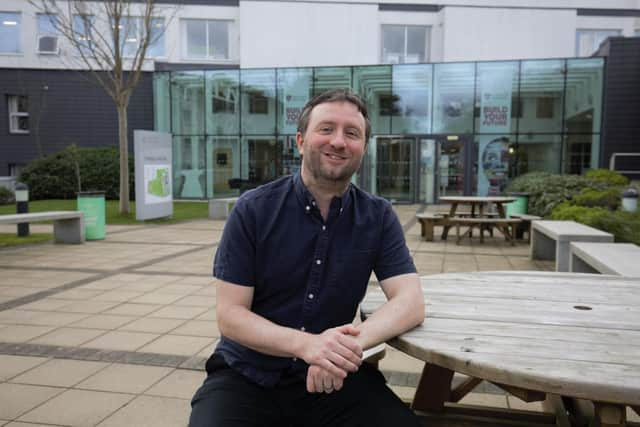The psychology behind finding a Valentine's love match according to Leeds expert
Looking for a Valentine this 14 February? As a Biological Psychologist teaching course material on human attraction at Leeds Trinity University, I’ve extensively considered the science and theory behind what makes a match.
For many, the search for true love can be long and arduous, with wish-lists lengthy and uncompromising. But the reality of how we choose a partner is, in fact, less driven by our conscious minds and more by our physiology.
Advertisement
Hide AdAdvertisement
Hide AdBased on the science, here’s some top tips for navigating the dating scene this Valentine’s Day.


1. Your much anticipated first date location matters more than you think.
If there is one thing human beings are bad at, it’s knowing why we feel the way we do. Usually, we are simply looking down and considering what our bodies are trying to tell us. For example, if you meet someone at the gym, is your heart beating with excitement at their sheer magnetism, or did you just step off the treadmill?
This is what psychologists call misattribution and it is a consistent explanation of the errors we make. If your first date is at an amusement park, don’t make relationship decisions in the moments after getting off the roller coaster.
Advertisement
Hide AdAdvertisement
Hide AdChances are you’ll get it wrong in – and because of – a heartbeat.
2. Opposites don’t attract.
We just think they do – it’s so hard-wired, according to Dijkstra and Barelds (2008), 86 per cent of us look for love by seeking someone with opposite traits. This is because it’s easier to note differences rather than things we have in common.
In a hefty paper considering the findings of 240 different studies, Montoya and Horton (2013) concluded that we prefer people like us because we assume they will like us too. So according to the science, for long-term relationship success, you need to look for a partner with the same sort of profile as yourself in terms of appearance, attainment,and extroversion.
3. Trust your nose to sniff out the perfect match.
In the classic ‘sweaty t-shirt study’ (Wedekind et al., 1995), six male volunteers were asked to wear the same white cotton t-shirt for 48 hours without washing. These t-shirts were then smelt by brave female participants who were asked to rate the smells in order. As it turns out, their ratings depended on their immune system – or rather, his.
Advertisement
Hide AdAdvertisement
Hide AdWomen prefer the smell of a partner who can provide novel genes to help offspring fight off diseases. And as a safety mechanism, women deplore the smells of the fathers and brothers they grew up with – too similar. So worry not if your Valentine relationship fizzles out rapidly – it wasn’t down to looks or personalities. It could well have just been something in the air.
4. Which is your better side?
As we grow, the different sides of our bodies grow at different times and speeds. If you are ill while one side of your body is in a growth spurt, it may not reach its full potential and starts to lag behind the other side.
As time passes, your left side and right side start to become dissimilar. Accepting that even our most beautiful and handsome celebrities are not perfectly symmetrical, if you are less symmetrical in the face than others, it is an indicator of ill-health.
If you are preparing for that first date, emphasise and enhance that symmetry, perhaps with long dangly earrings or a well-groomed beard.
Advertisement
Hide AdAdvertisement
Hide AdAnd if Valentine’s Day leads to something special? It’s not just maintaining that attraction. Keep doing things together – joint activities, but always novel and challenging ones. As the heart grows fonder, being together helps to reduce blood pressure and reduces risk of heart disease.
Valentine’s Day may be embarrassing and awkward, but it just might be worth it.
Support The Yorkshire Post and become a subscriber today. Your subscription will help us to continue to bring quality news to the people of Yorkshire. In return, you'll see fewer ads on site, get free access to our app and receive exclusive members-only offers. Click here to subscribe.
